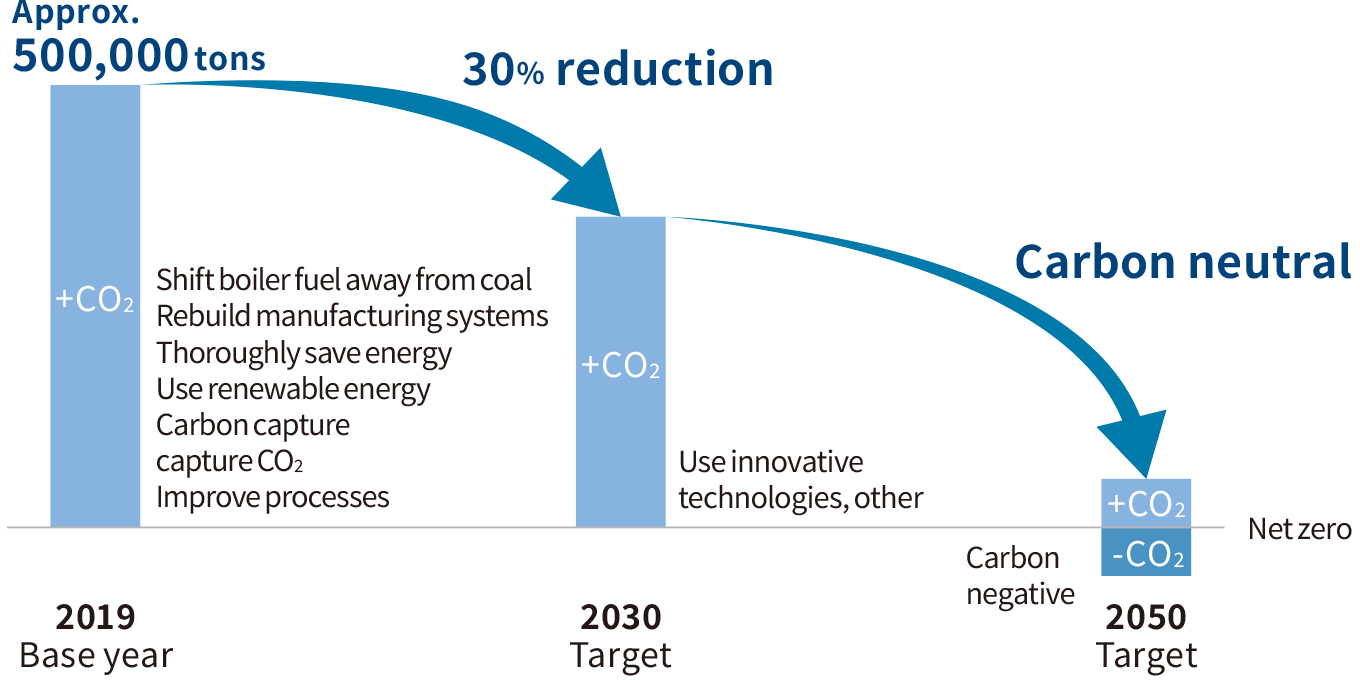Dealing with climate change
ISK Group Aiming for Carbon Neutrality by 2050
With climate change becoming a major worldwide issue, the ISK Group has identified dealing with climate change and reducing environmental impacts as priority issues (materiality) and aims to become carbon neutral by 2050.
Reduction Targets
The ISK Group has set the reduction targets for CO2 emissions (Scope 1 and Scope 2). We will continue to strive for reduced emissions and carbon neutrality in order to promote Climate Change Mitigation and Adaptation.
2030: Target CO2 emissions reduction by 30% (against FY2019)
2050: Challenge carbon neutrality (net zero emissions)
Disclosure based on TCFD Recommendations

ISK has announced its support for the Task Force on Climate-Related Financial Disclosures (TCFD)* recommendations.
*TCFD (Task Force on Climate-Related Financial Disclosures): The TCFD recommends that companies evaluate the financial impact of the risks and opportunities posed by climate change on their business management and provide disclosure on the four areas of governance, strategy, risk management, and metrics and targets.
(TCFD website: https://www.fsb-tcfd.org/)
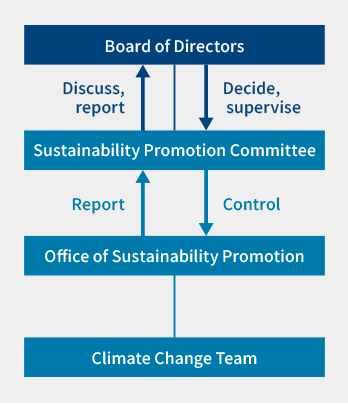
Governance
Our climate change-related efforts are overseen by the Sustainability Promotion Committee, which is established under the Board of Directors. The Office of Sustainability Promotion, headed up by an executive officer, plans measures which will then be implemented by the Climate Change Team underneath it. The team comprises people from factory management, manufacturing divisions, administrative department, and ISK affiliates. The efforts and measures the team comes up with are deliberated on at Sustainability Promotion Committee meetings held at least twice a year, and those approved are consulted on and passed by the Board of Directors. The progress of activities by the Sustainability Promotion Committee, including the Climate Change Team, is reported every three months to the Board of Directors, which supervises these activities.
Strategy
Chosen Climate Change Scenarios
Referencing climate change scenarios published by the IEA (International Energy Agency) and IPCC (Intergovernmental Panel on Climate Change), we selected scenarios of a rise of 1.5–2°C and 4.0°C. Recognizing that climate change’s impact on business becomes more evident in the medium- and long-term, we analyzed the impact of climate change until 2050, as the time horizon.
Average Worldwide Temperature Change Based on 1850–1900
*You can see the entire image in the figure by scrolling horizontally.
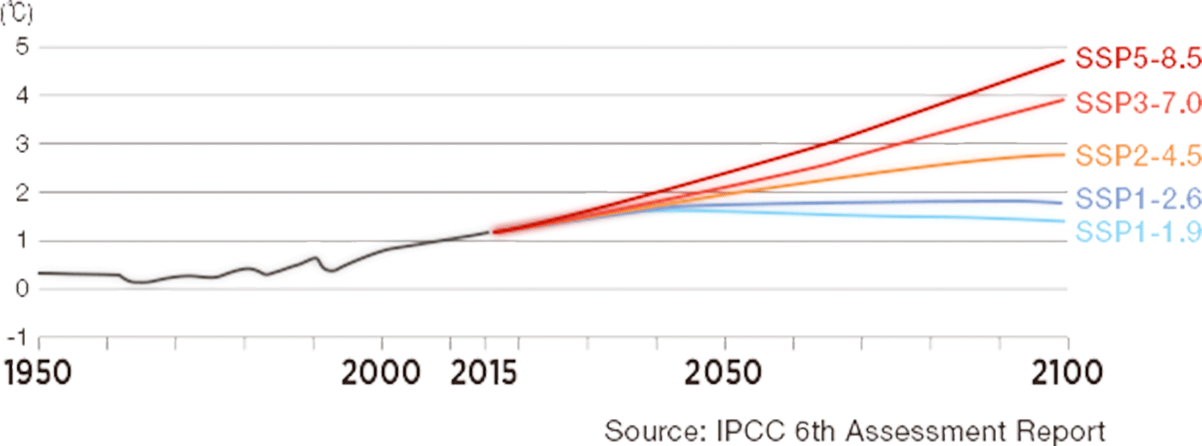
(IEA STEPS, SSP2-4.5, RCP8.5)
(IEA NZE 2050, IEA SDS, SSP1-2.6, RCP2.6)
Scenario Analysis Process
*You can see the entire image in the figure by scrolling horizontally.
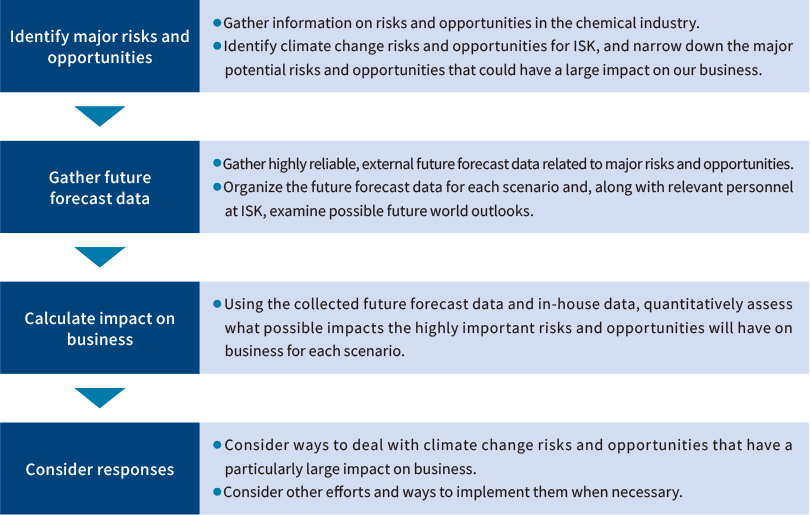
Scenario Analysis Results
The ISK Group used external information to analyze the main climate change risks and opportunities in our business, and gathered future forecast data related to each risk and opportunity.
Based on this, we considered the risks and opportunities that arise from the transition to the carbon neutral society under each of the 1.5–2°C and 4°C scenario. We then analyzed the major risks and opportunities that could impact our business up until 2050.
As a result, for the 1.5–2°C scenario, we identified risks such as greatly increased operating costs due to the imposition of a carbon tax on CO2 emissions.
Therefore, recognizing the importance of reducing CO2 emissions across the entire ISK Group, we will proceed with various planned measures towards achieving carbon neutrality by 2050.
Risk Management
One of the eight priority issues (materiality) that the ISK Group has identified is “dealing with climate change and reducing environmental impacts.”
In recognition of the urgency of climate change, the ISK Group has established the Climate Change Team under the Office of Sustainability Promotion. This team identified climate change risks, the results of which are assessed and controlled by the Office of Sustainability Promotion. When necessary, matters are reported to the Corporate Risk Management Committee.
Business Risks and Opportunities Identified through Risk Level Assessment and Scenario Analysis
*You can see the entire image in the figure by scrolling horizontally.
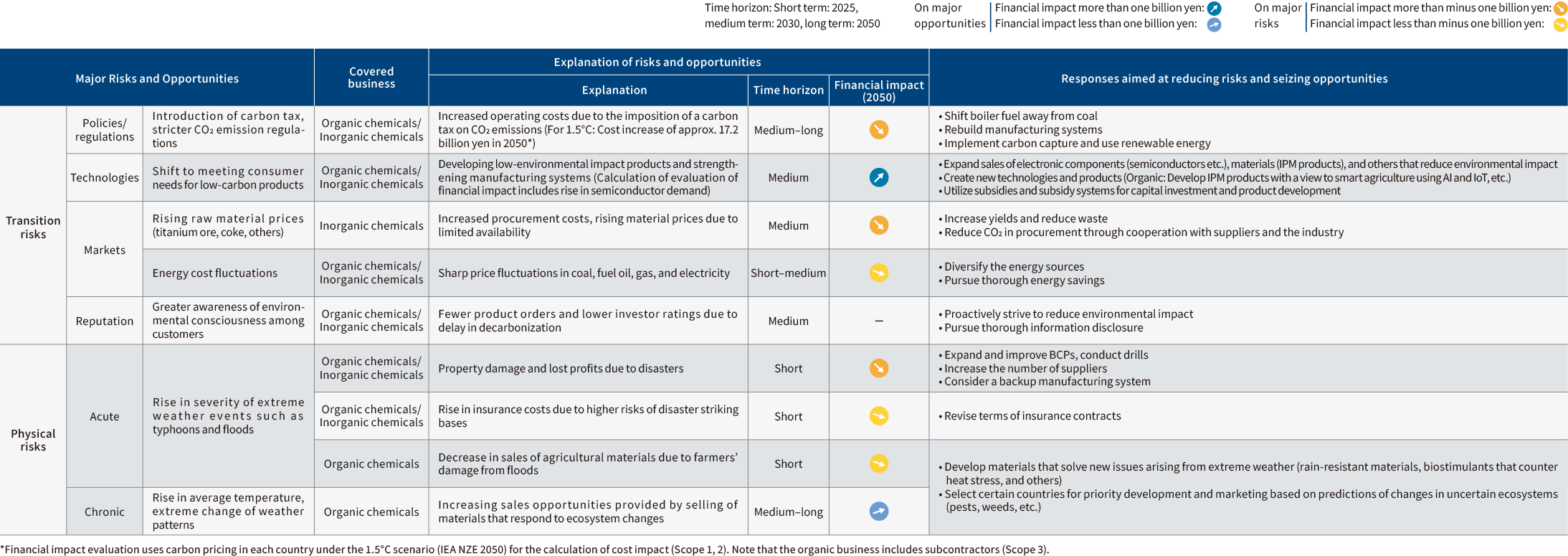
Indexes and Targets
Our Group's greenhouse gas (GHG) emissions (Scope 1 and 2) remained at the same level as the previous year. Additionally, our Scope 3 emissions, which are emissions from the supply chain, increased due to such factors as increased raw material procurement costs, outsourcing costs, and capital investment. Our Group has established targets for reducing CO2 emissions (Scope 1 and 2). At the Yokkaichi Plant, which has the highest CO2 emissions, the company is not only promoting energy-saving activities but also tackling a variety of other issues, including the use of renewable energy derived from biomass, the introduction of low-energy-load equipment, the verification of technologies to improve thermal efficiency, and the development of mass production of heat storage materials.
GHG (Greenhouse Gas) Emissions of ISK Group (1,000 t-CO2)
*You can see the entire image in the figure by scrolling horizontally.

GHG Emissions of Scope3 (1,000 t-CO2)
*You can see the entire image in the figure by scrolling horizontally.
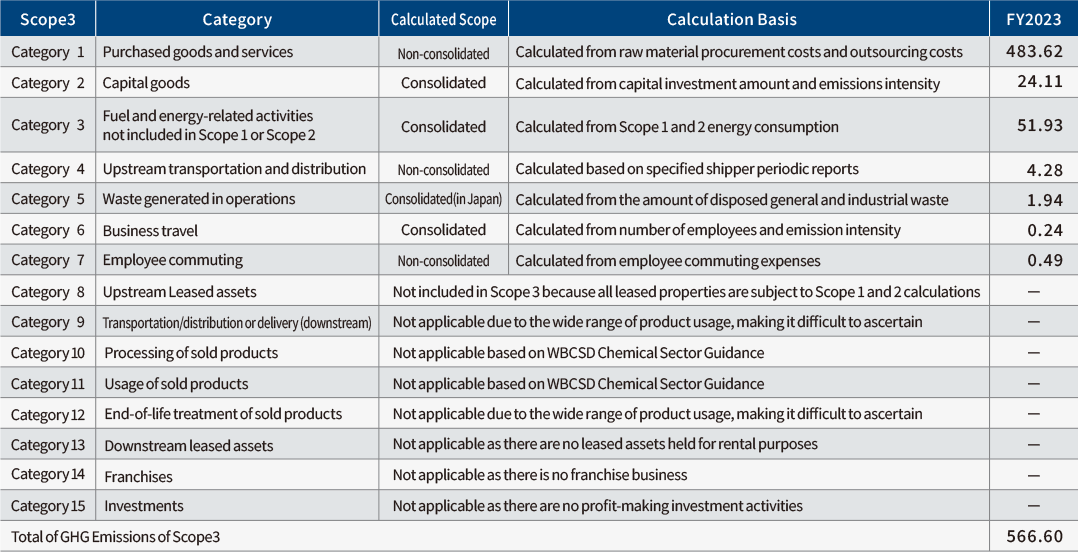
Drawing a Road Map to Carbon Neutrality
The Yokkaichi Plant, our flagship production base, has been using a coal-fired cogeneration system to achieve optimal energy costs in manufacturing. But because of the occurrence of extreme weather events due to climate change, reducing CO2 emissions has become a priority issue. We have therefore drawn a road map to carbon neutrality for the ISK Group in Japan through multistage CO2 reductions, with the Yokkaichi Plant at the center of this effort.
We aim to systematically reduce CO2 emissions (Scope 1 and Scope 2) 30% by 2030 compared to fiscal 2019. This will be achieved, for example, by replacing coal for boilers with low-carbon fuels, rebuilding manufacturing systems, thoroughly saving energy, using renewable energy, capturing CO2 in various processes, and improving facilities. Towards achieving carbon neutrality in 2050, in addition to the measures mentioned above, we will aim to dramatically reduce emissions through innovative technologies, and explore the development and implementation of decarbonization technologies such as CCUS (carbon capture,utilization, and storage).
CO2 Emission Reduction Road Map
*You can see the entire image in the figure by scrolling horizontally.
